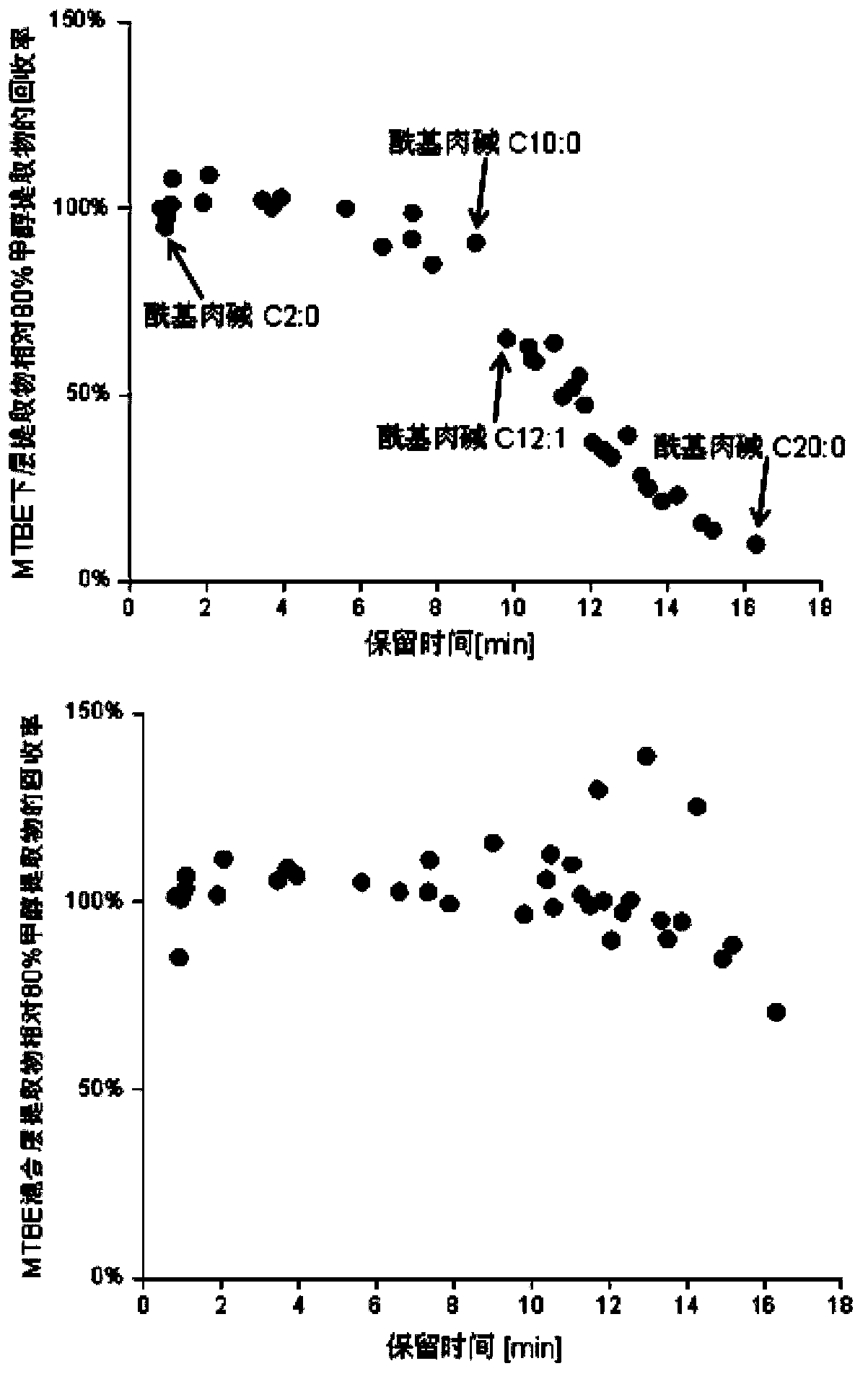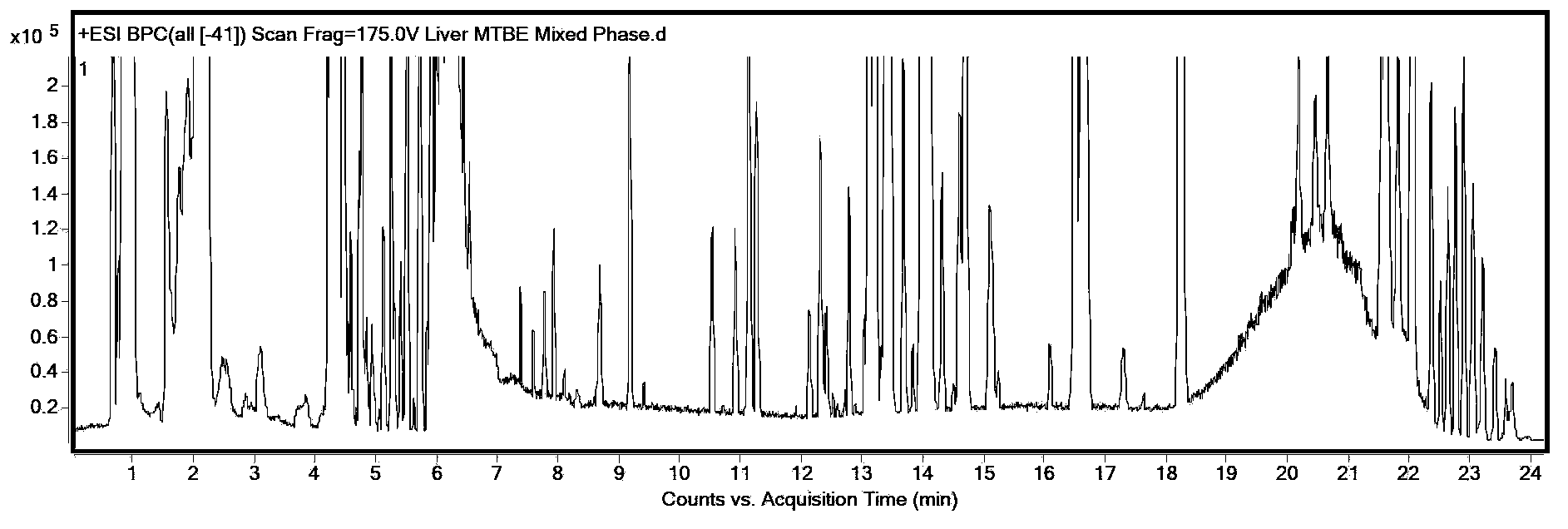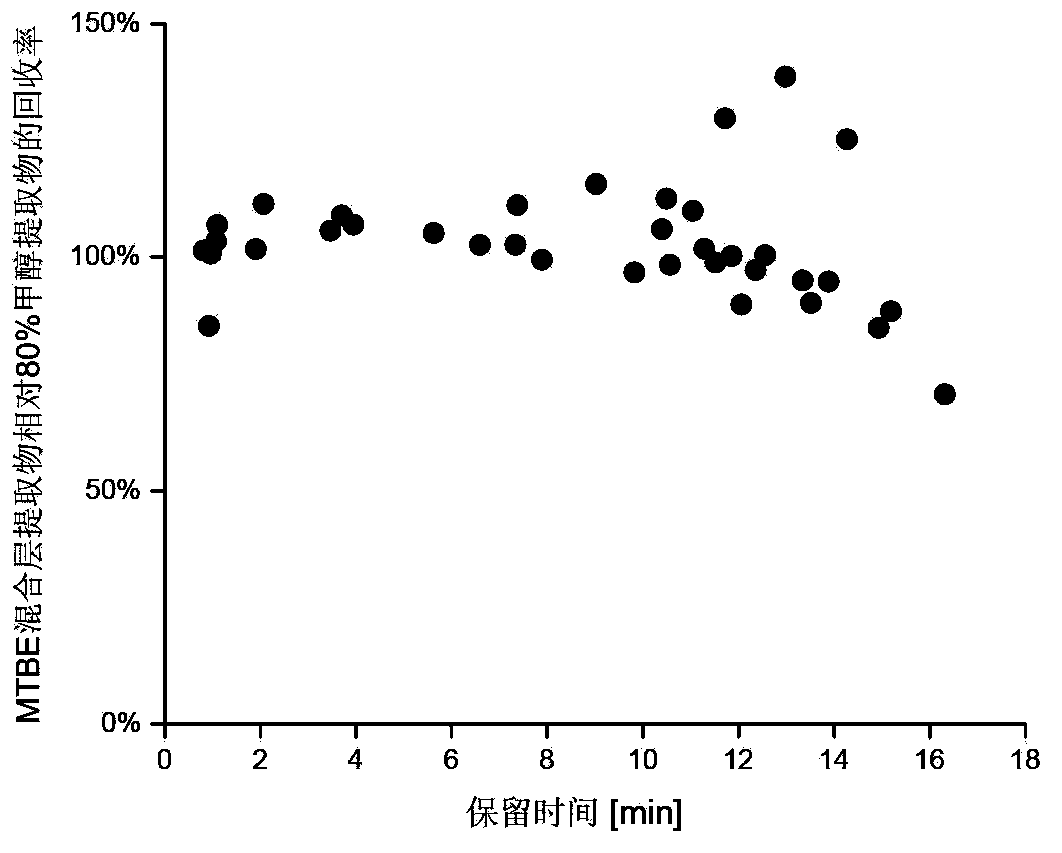Method for simultaneous extraction and analysis of metabolite group and lipid group in microtissue
A metabolite and lipid group technology, applied in the field of analytical chemistry, can solve the problems of large tissue sample consumption and multiple extractions, and achieve the effects of reducing potential harm, reducing dosage, and facilitating data integration
- Summary
- Abstract
- Description
- Claims
- Application Information
AI Technical Summary
Problems solved by technology
Method used
Image
Examples
Embodiment 1
[0034] Example 1: Simultaneous extraction and analysis of metabolome and lipidome in liver samples
[0035] 1. Sample Collection
[0036] Liver tissues were collected from anesthetized and sacrificed C57Bl / 6J mice, washed with phosphate buffered saline and frozen in liquid nitrogen. Frozen tissues were lyophilized in a freeze dryer and ground through a tissue grinder. Liver tissues were stored in a -80°C freezer before and after lyophilization.
[0037] 2. MTBE system to extract metabolites and lipids
[0038] Weigh 10 mg of liver tissue into a 2 mL Eppendorf tube, add 400 μL of 75% methanol and sonicate for 2 min. Add 1 mL MTBE and shake for 1 h. Add 250 μL of water to separate the extract into upper and lower layers. After standing at room temperature for 10 minutes, centrifuge at 14000 g for 15 minutes.
[0039] Pipette 220 μL of the upper layer extract into a 1.5 mL Eppendorf tube for freeze-drying, and record it as the upper layer extract; pipette 110 μL of the lowe...
Embodiment 2
[0057] Example 2: Simultaneous extraction and analysis of target metabolite group and lipid group in liver tissue with different sample sizes For rat liver tissue, the sample was extracted by the method in Example 1, and target acylcarnitine (mixed layer extract) analysis and lipidomics (upper layer extract) analysis were performed. The volume of extract reconstitution solvent increased proportionally with the sample volume, allowing the results of acylcarnitine metabolites and lipid analysis in tissues with different sample volumes to be comparable.
[0058] It can be seen from the analysis results that, compared with 10mg tissue, most of the acylcarnitine metabolites in 1mg, 2.5mg, 5mg and 25mg tissues ( Figure 6 ) and representative lipids ( Figure 7 ) extraction efficiencies are close to 100%, indicating that the method established by the present invention is applicable to a wide range of tissue samples (1-25 mg).
Embodiment 3
[0059] Example 3: Simultaneous extraction and analysis of target metabolites and lipid groups in soleus muscle samples
[0060] The above-mentioned MTBE extraction-liquid chromatography-mass spectrometry analysis method was used for the target metabolites and non- Analysis of target lipidome (top extract).
[0061] Carnitine and 42 acylcarnitine metabolites ( Figure 8 ), 24 free fatty acids ( Figure 9 ) and hundreds of lipids (representative lipids such as Figure 10 shown). So many metabolites and lipids can be detected from such a small amount of muscle tissue (dry weight 2.5 mg), which fully demonstrates the superiority of the method established by the present invention.
[0062] schedule
[0063] Table 1 Comparison of acylcarnitine recovery between liver tissue MTBE mixed layer extract and 80% methanol extract
[0064] Table 2 Comparison of recovery rates of free fatty acids between liver tissue MTBE mixed layer extract and 80% methanol extract
[0065] Schedule 1...
PUM
 Login to View More
Login to View More Abstract
Description
Claims
Application Information
 Login to View More
Login to View More - R&D
- Intellectual Property
- Life Sciences
- Materials
- Tech Scout
- Unparalleled Data Quality
- Higher Quality Content
- 60% Fewer Hallucinations
Browse by: Latest US Patents, China's latest patents, Technical Efficacy Thesaurus, Application Domain, Technology Topic, Popular Technical Reports.
© 2025 PatSnap. All rights reserved.Legal|Privacy policy|Modern Slavery Act Transparency Statement|Sitemap|About US| Contact US: help@patsnap.com



